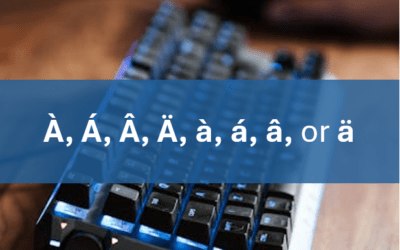FileMaker Pro: Introduction
FileMaker Pro Training Series | Level 1
Course Details
Duration: 1 day (9 am – 4 pm)
Software Versions: 17 | 18 | 19 (other versions on request)
Delivery Methods (Instructor-led): Live classroom (LC) | Virtual classroom (VC)
Course Dates: August 19, 2021 | View schedule ![]()
Course Fee: $275 CDN per person + HST (Virtual classroom), $295 CDN per person + HST (Bring your own device for live classroom courses) or $345 CDN per person + HST (Avantix Learning provides device for live classroom courses)*
Custom training: This course may be delivered at your site or ours as an instructor-led or virtual classroom solution. Contact us at info@avantixlearning.ca for more information including savings for custom group training.
Note: Public scheduled courses are delivered as live instructor-led classroom training or virtual classroom training (as indicated). Bring your own device rates apply to live classroom courses.
Course Overview
During this hands-on FileMaker training course, students will work with this powerful relational database program to create and edit FileMaker databases with tables and multiple layouts. Tables will be designed with various types of fields and properties including fields with drop-down menus, lists, radio buttons and check boxes. Various layouts will be created and formatted for entry and reporting. Students will create multiple find requests with different types of criteria to extract data and will also create reports with calculated fields and summary totals. At the end of the day, students will create a simple relationship between two tables. Throughout the course, the instructor will include numerous tips, tricks and shortcuts.
Prerequisite: Basic keyboarding skills and computer skills
Custom training: This course may be delivered at your site or ours as an instructor-led or virtual classroom solution. For more information including savings for custom group training, email us at info@avantixlearning.ca or contact us by phone.
INCLUDED IN THIS COURSE
- Comprehensive course manual
- Sample and exercise files
- Refreshments (for classes conducted in Avantix Learning classrooms)
- Certificate of completion
- Follow-up email support
Course Topics
Getting Started with FileMaker
- Components of a database
- FileMaker's saving behaviour
- Creating and saving a new FileMaker database
- Using the Manage Database dialog vs Field Picker
- Working with FileMaker's modes or views
Creating Tables and Fields
- Creating tables with different types of fields including text, number and date
- Setting properties or options for fields
- Auto-entering data in specific fields (such as dates)
- Creating simple calculated fields in FileMaker
- Renaming a table
- Adding or changing fields
- Viewing data in Browse mode
Adding and Modifying Records
- Viewing as form, list or table in Browse mode
- Entering and editing records in Browse mode
Navigating in FileMaker
- Moving between FileMaker's views using different strategies
- Navigating between fields
- Navigating between records
Creating and Editing Layouts
- Working with FileMaker's Inspector, menus and toolbars in Layout mode
- Formatting the initial FileMaker layout by changing themes
- Changing fonts and sizes
- Moving and resizing fields and labels
- Changing colours
- Adding titles
- Creating new layouts to display different types of data in different ways
- Adding and removing fields from a layout
- Renaming layouts
Finding Records
- Using FileMaker's Find mode to find records using multiple criteria
- Creating multiple find requests in and/or scenarios
- Deleting found records
- Omitting records
- Automating repetitive finding by saving find settings
Enhancing Layouts
- Adding a logo to a layout
- Creating letter layouts with merge fields
- Creating label layouts with merge fields
- Automating FileMaker by creating pop-up menus, drop-down lists, radio buttons and check boxes in layouts
Creating and Formatting Reports in FileMaker
- Creating report layouts with different parts including Header, Body and Footer parts
- Adding grand summary parts to a report
- Creating grand totals in reports using summary fields
- Previewing reports
Creating a Relationship
- Setting up a simple relationship between tables based on a key field
- Overview of FileMaker's table occurrence logic
- Creating a layout that extracts information from two or more tables
Register Now for a public course at our downtown Toronto location at 1 Yonge Street, Suite 1801 (Toronto Star Building), Toronto, Ontario, Canada.
If you need more information or would like to arrange custom training, contact us.
To request this page in an alternate format, contact our staff.
*Prices subject to change.
Copyright 2024 Avantix® Learning

Custom training
Register now for a public scheduled course or contact us to discuss on-site or off-site custom training solutions.
Related courses
Microsoft Excel: Intermediate / Advanced
Microsoft Access: Introduction
You may like
How to Replace Zeros (0) with Blanks in Excel
There are several strategies to replace zero values (0) with blanks in Excel. If you want to replace zero values in cells with blanks, you can use the Replace command or write a formula to return blanks. However, if you simply want to display blanks instead of zeros, you have two formatting options – create a custom number format or a conditional format.
What is Power Query in Excel?
Power Query in Excel is a powerful data transformation tool that allows you to import data from many different sources and then extract, clean, and transform the data. You will then be able to load the data into Excel or Power BI and perform further data analysis. With Power Query (also known as Get & Transform), you can set up a query once and then refresh it when new data is added. Power Query can import and clean millions of rows of data.
How to Freeze Rows in Excel (One or Multiple Rows)
You can freeze one or more rows in an Excel worksheet using the Freeze Panes command. If you freeze rows containing headings, the headings will appear when you scroll down. You can freeze columns as well so when you scroll to the right columns will be frozen.
How to Show or Hide Gridlines in Excel
You can remove or hide gridlines in Excel worksheets to simplify worksheet design. By default, gridlines are displayed but do not print. Gridlines are applied to entire worksheets or workbooks, not to specific cells. If you hide gridlines on one worksheet, it doesn't affect other sheets in the same workbook.
How to Combine First and Last Name in Excel (5 Ways)
You can combine first and last name in Excel in several ways – using the CONCATENATE operator, the CONCATENATE function, the CONCAT function, the TEXTJOIN function or Flash Fill. These functions are often used to combine text in cells but you can also combine text with spaces, commas, dashes or another character. It's common to combine first and last names that appear in two columns into one new column. Some functions are only available in newer versions of Excel but the CONCATENATE operator and function are available in all versions.
How to Insert Multiple Columns in Excel (4 Fast Ways with Shortcuts)
You can quickly insert multiple columns in Excel using a drop-down menu, keyboard shortcuts or the Home tab in the Ribbon. The key to inserting multiple columns at once, rather than one by one, is to select the number of columns you want to insert first and then insert columns. Excel will insert the same number of columns you selected.
You may also like
How to Insert or Type I with an Accent Mark in Word (Í, í, Ì, ì, Î, î, Ï, or ï)
You can insert or type i with an accent mark in Word using built-in tools or keyboard shortcuts (including Alt code shortcuts). The letter i can be inserted with an accent in both upper or lower case. The following are common accented characters that you can insert or type in Word in upper or lower case: grave (Ì or ì), acute (Í or í), circumflex (Î or î) and umlaut (Ï or ï).
How to Insert or Type A with an Accent Mark in Google Docs (À, Á, Â, Ä, à, á, â, or ä) – 6 Ways
You can insert or type a with an accent mark in Google Docs in several ways. You can use built-in tools, online tools, add-ons or keyboard shortcuts (including Alt code shortcuts). The letter a can be inserted with an accent in both upper or lower case. The following are common accents in upper or lower case – À, Á, Â, Ä, à, á, â, or ä.
How to Insert or Type A with an Accent Mark in Word (À, Á, Â, Ä, à, á, â, or ä)
You can insert or type a with an accent mark in Word using built-in tools or keyboard shortcuts (including Alt code shortcuts). The letter a can be inserted with an accent in both upper or lower case. The following are common accented characters that you can insert or type in Word in upper or lower case: grave (À or à), acute (Á or á), circumflex (Â or â) and umlaut (Ä or ä).
FileMaker, FileMaker Go and the file folder logo are registered trademarks of FileMaker, Inc. in the U.S. and other countries. Mac and the Mac logo are trademarks of Apple Inc. registered in the U.S. and other countries. Microsoft and Windows are registered trademarks of the Microsoft Group of Companies. All other trademarks are the property of their respective owners.









